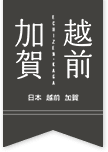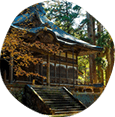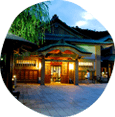What comes to mind when you think about Japan’s Hokuriku region? Perhaps Kanazawa Castle or Kenroku-en? Kanazawa is, of course, a lovely place to go sightseeing, but have you heard of the sightseeing area called “Echizen-Kaga”?
That’s right; a trip to the Hokuriku region doesn’t have to just be about Kanazawa! This article will teach you all about the charms and appeals of the Echizen-Kaga area!
Table of Contents
- Beginner’s Guide to Echizen-Kaga
- Ready to Begin Your Trip? Echizen-Kaga Tour Guide
- 7 must-see spots for your first trip to Echizen-Kaga
- No hesitation! Transportation information for each major sightseeing spot in Echizen-Kaga
- Making the most out of Echizen-Kaga! Recommended model course
- Experience Echizen-Kaga! Click here for information on things you can only experience in Echizen-Kaga
- Get Even More Fun Out of Your Trip! Must-Know Echizen-Kaga Sightseeing Information
Beginner’s Guide to Echizen-Kaga
What is Echizen-Kaga? Where is it?
Echizen-Kaga is a special area, located along the prefectural border between Fukui and Ishikawa Prefectures, surrounded by the sacred Mt. Hakusan, and facing the bountiful Sea of Japan. The area can be reached by train or Shinkansen in about 30 minutes from Kanazawa, 2 hours from Tokyo, 2 and a half hours from Osaka and Nagoya, and 3 hours from Tokyo.
In recent years, Echizen-Kaga has quickly built a reputation as an iconic area in Hokuriku, a “new sightseeing spot where you can enjoy both beautiful views and Japan’s culture at the same time”!
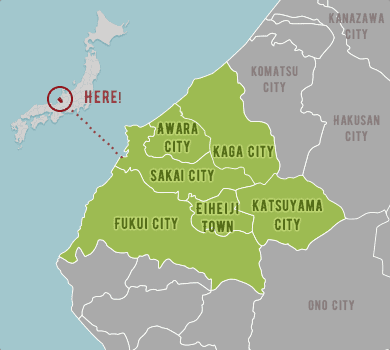
The Echizen-Kaga area includes Fukui Prefecture’s Katsuyama City, Eiheiji, Sakai City, and Awara City, as well as Ishikawa Prefecture’s Kaga City along the southwestern border.
Echizen-Kaga’s 4 major attractions+1

1. Touch Japan’s ancient religious culture!
Echizen-Kaga is located around the sacred Mt. Hakusan.
The sacred Mt. Hakusan is a mountain that stands with an altitude of 2,702m that spans across Ishikawa, Fukui, and Gifu Prefectures. It is one of Japan’s three sacred mountains, alongside Mt. Fuji and Tateyama, and it has been an object of faith in Japan since ancient times. In ancient Japan, Mt. Hakusan was considered a mountain kami, or Shinto god, that supplied the water needed for agriculture, as well as an ocean kami that served as a beacon for ships at sea. This is known as “Hakusan Shinko,” or Hakusan faith, a faith based on deification of mountains.
The Echizen-Kaga area is still dotted with temples and shrines dedicated to this unique and remarkable religious culture. Eiheiji Temple, the remains of Yoshizaki-Gobo, Takidanji Temple, Hakusan Heisenji Temple, Echizen Great Buddha, and the Yamanoshita Temples, as well as others, all offer unique aesthetics, and visitors can touch the religious culture that attracted them to the area!

2. Experience a beautiful view of both the sea and mountains at the same time!
Echizen-Kaga is located between the nearly 3,000-meter-tall Mt. Hakusan and the beautiful Sea of Japan.
This short distance between tall mountains and the sea allows the Echizen-Kaga area to offer dramatic and varied views of both sea and mountains.
A particularly breathtaking vantage point is Hokuriku’s top scenic spot, the natural monument “Tojinbo.” The rocky coast here was gradually worn down by the rough waves of the Sea of Japan after forming as giant columns of rock with sheer, dramatic cliffs, creating spectacular scenery across roughly a kilometer-long stretch of the coastline. The natural art created by these strangely-shaped rocks is sure to take your breath away!
Furthermore, the Hokuriku region’s most beautiful gorge, “Kakusenkei Gorge,” features a walking path along its 1.3-kilometer length with remarkable rock formations, charming bridges, and wonderful scenery through all four seasons.

3. Plenty of secluded onsen (hot springs) for hot spring lovers!
Echizen-Kaga is home to five hot spring towns, each with their own distinct charms, whether the mountain hot springs in the foothills of Mt. Hakusan or the seaside hot springs with a view of the Sea of Japan.
- Awara Onsen:One of Fukui Prefecture’s finest hot springs towns, Awara Onsen is home to around 30 ryokan and minshuku inns. There are 74 source hot springs that feed the area.
- Mikuni Onsen:A hot springs town that features beautiful sunsets over the ocean.
- Yamanaka Onsen:Enjoy the beautiful nature of the gorge in this hot springs area founded over 1,300 years ago.
- Yamashiro Onsen:A hot springs area beloved by many people of culture.
- Katayamazu Onsen:Enjoy pleasure boats and fireworks at this hot springs town located on the shore of Lake Shibayama and overlooking Mt. Hakusan.

4. A holy land of local specialty products and gourmet foods!
Echizen-Kaga offers both mountain-based and ocean-based foods, making it truly a holy land for gourmet foods!
Enjoy “Echizen Gani Crab,” known as the king of wintertime flavors in Japan, “Echizen Oroshi Soba,” a delicious combination of grated daikon radish and soba developed over 400 years ago, and high-class fruits, all exquisite and iconic tastes of Japan!
Introducing Echizen-Kaga’s specialty products! Click here for details!



Echizen-Kaga Plus ★ Plenty of charming spots to experience!
So far, we have introduced to you 4 major attractions of the Echizen-Kaga area, but there’s still more to do! Echizen-Kaga offers various spots that appeal to those of you who enjoy hands-on experiences, such as the following!
- The “Kutaniyaki Art Museum,” introducing guests to Japan’s iconic traditional craft “kutaniyaki” pottery first created during the Edo period
- “Skijam Katsuyama,” one of western Japan’s largest ski resorts
- “Shibamasa World Amusement Park,” a vast leisure spot with an enormous pool and the world’s largest waterslide
- “Echizen Bamboo Doll Village,” a facility where you can be in awe at the smooth black hair made with bamboo and experience the process of making simple bamboo dolls
Ready to Begin Your Trip?
Echizen-Kaga Tour Guide
We’re sure you’re ready to head off to Echizen-Kaga right away thanks to all its various appeals! However, where to visit…?
Here we will introduce some must-visit locations in Echizen-Kaga for first-time visitors!
Furthermore, we will show a model course that lets you enjoy all of Echizen-Kaga’s charms, as well as list various experiences and access information for each sightseeing area!

7 must-see spots for your first trip to Echizen-Kaga
What exactly should I do when I visit Echizen-Kaga?
Here we have listed 7 carefully-chosen must-see spots in Echizen-Kaga for those visiting for the first time!

Photo provided by : Daihonzan EIHEIJI
1) Daihonzan Eiheiji Temple
Known as a Zen village, Daihonzan Eiheiji Temple was awarded 2 stars in the “Michelin Green Guide Japan,” and it’s known both within Japan and internationally. The temple was established in 1244, and the grounds span over 33 hectares, with over 70 buildings of varying sizes and surrounded by ancient cedar trees as many as 700 years old. Even today, Buddhist monks gather here from across Japan to train, and the general public are welcome to visit to try zazen seated meditation, copying sutras, and other forms of Zen training.
Recommended Points
- “Sanshokaku,” where 230 Japanese paintings are on display, is a must-see. Most of them are Japanese-style paintings representing natural beauty, but 5 pictures depicting koi fish, lions, and squirrels are hidden within them. Can you find them all?
- There are many beautiful buildings, including the “Butsuden,” where Buddhas from the present, past, and future are enshrined.
- Various training experiences are available, including 3-day-4-night training where participants can experience the life of a monk.

2) Tojinbo Cliffs
The Tojinbo Cliffs are famous for being one of Japan’s most beautiful locations. Seeing the cliffs up close is a thrilling experience! The appeal of Tojinbo Cliffs comes from its interestingly-shaped cliffs, which have been lauded as a beautiful scenic spot since ancient times. The jagged rocks span a distance of about 1km, and only 3 places worldwide, Tojinbo included, feature similar pyroxene andesite pillar joints. The view looking out over the water’s surface from 25m up (equivalent to the 8th or 9th floor of a building) is truly stunning.
Furthermore, there are many old souvenir shops and restaurants nearby. There is also the Tojinbo Tower, from which you can see the far-off Noto Peninsula, so there’s no shortage of ways to enjoy the area!
Recommended Points
- Not only is the blue ocean stunning against the clear blue sky, but sunsets where the sun sinks into the Sea of Japan and stains the area amber and winters where snow blows along the sea are also beautiful.
- A boat called the “Tojinbo Pleasure Boat” travels around the Tojinbo Cliffs in about 30-minute trips. Enjoy a boat ride around the uninhabited islands eroded by the ocean’s waves and take in the powerful sight of the cliffs from atop the water.
- Old-fashioned tourist shops are plentiful in the Tojinbo area, so the area is always bustling. There are also restaurants offering up fresh seafood and shops selling local products.

3) Awara Onsen
Awara Onsen is one of Fukui Prefecture’s top hot spring towns, with around 800,000 tourists visiting annually. The rural sights available from the available lodgings are iconic, and each ryokan offers unique gardens, serves fresh seafood from the Sea of Japan, and offers up humble hospitality, all sure to help heal your fatigues from travel!
Recommended Points
- The area features 74 hot springs, and the type and quality of the water varies from ryokan to ryokan, so you can enjoy visiting multiple locations.
- There are around 30 ryokan and inns, so we recommend staying at one with a hot spring.
- The largest footbath in the Hokuriku region, “Ashiyu,” is very popular! It’s free, so everyone can enjoy it (free Wi-Fi also available).

4) Hakusan Heisenji Temple
Around 1,300 years ago, Hakusan Heisenji Temple was founded, dedicated to the “Hakusan faith.” The entire mountain was set on fire during the Sengoku period of Japan, but the temple has since been rebuilt, and recent archaeological investigations have shone light on more and more of the temple’s history. Hakusan Heisenji Temple is famous as a sacred place for the Hakusan faith, and it also is surrounded by beautiful landscapes. Enjoy fantastical and mysterious sights, as if you’ve stepped into a fantasy world!
Recommended Points
- During the summer, the temple grounds are covered with beautiful moss. The deep green of the area makes it feel like a fantasy world.
- The stone path that leads to the temple is said to have been made in the Middle Ages, and the trees that flank it on either side are over 350 years old, giving the area a majestic atmosphere.
- If you continue to walk along the approach path, surrounded by deep greenery, you’ll reach the main building of Heisenji Hakusan Shrine. The door to the main building is opened just once every 33 years. It will next be opened in 2025, making it a very mysterious place.

5) Kaga Onsen Village
Kaga Onsen Village is home to 3 different hot springs. Each is unique, with hidden history and different flavors of refinement.

1. Yamanaka Onsen
This hot springs area was established 1,300 years ago, and it was even visited by the haiku poet Matsuo Basho. The gorge is lined with Japanese-style ryokans and hotels.

Recommended Points
- Traditional performances by local geishas are put on at Yamanaka-za.
- The nearby “Kakusenkei Gorge” is a place of natural beauty, and a 1.3km-long promenade facing the gorge lets visitors enjoy the seasonal beauties of the area’s nature.
- Enjoy tea and sweets at a café located in by the riverside near Ayatori Bridge from April through November.

2. Yamashiro Onsen
Like Yamanaka Onsen, Yamashiro Onsen was established 1,300 years ago, and it has been long loved by many people of culture.

Recommended Points
- A free-to-use footbath is available at Gensen Park, located in the center of the hot springs town.
- There are 2 communal baths, “soyu” and “kosoyu,” where visitors can experience traditional bathing.
- The hot spring egg soft-serve ice cream, made with hot spring eggs sold at the soyu, is a local specialty.

3. Katayamazu Onsen
Katayamazu Onsen is located along the shore of a lake, so you can immerse yourself in a hot spring while looking out over the beautiful lake and Mt. Hakusan.

Recommended Points
- The water at Katayamazu Onsen supposedly has a heat-insulating effect, making it hard for the water to cool. It is said that this makes it effective at treating cold sensitivity in women.
- Enjoy bathing in a hot spring while looking out over the lake, the surface of which changes colors 7 times in a day.
- There are various activities to enjoy, such as boat rides, fireworks over the lake, and cycling.

6) Maruoka Castle
Maruoka Castle was built in 1576 by order of Oda Nobunaga. Today, Maruoka Castle has the oldest flat-land castle architectural style of any of Japan's 12 remaining original castle towers, and it has been nationally registered as an important cultural property. This watchtower-style castle tower appears from the outside to have two floors, but has three floors inside, and has distinctive unglazed slate roof tiles. During spring, the Yoshino cherry blossoms in the area are in full bloom, and the castle is also considered one of Japan’s 100 finest cherry blossom viewing sites.
Recommended Points
- Oldest flat-land castle architectural style of any of Japan’s twelve remaining original castle towers.
- The castle park is home to 400 Yoshino cherry trees, and it has been named one of Japan’s 100 finest cherry blossom viewing sites. The Maruoka Castle Cherry Blossom Festival is held in April.
- The “History and Folklore Museum” in the castle is a Japanese garden-style park, and inside you will find items on display related to the old lord of the castle.

7) Fukui Prefectural Dinosaur Museum
The Fukui Prefectural Dinosaur Museum is one of the world’s 3 largest dinosaur museums. The exhibition room, located within the glittering silver dome, has no supporting pillars, allowing you to enjoy the displays in all their glory. There’s so much to see here, including 44 full-body dinosaur skeletons, large restoration dioramas, and pictures!
Recommended Points
- Enjoy the thrilling videos played at Dino Theater (on screen), fun for children and adults alike.
- There is a café in the museum where you can enjoy local gourmet foods.
- The museum shop, which offers a variety of dinosaur figures, is popular.
No Hesitation! Transportation Information for Each Major Sightseeing Spot in Echizen-Kaga
The Echizen-Kaga area can be roughly divided into 5 sightseeing areas in a counterclockwise direction, as shown on the map below.
The areas are known as the “Tojinbo Area,” “Awara Hot Springs Area,” “Daihonzan Eiheiji Temple Area,” “Fukui Prefectural Dinosaur Museum Area,” and the “Kaga Hot Springs Area” respectively.
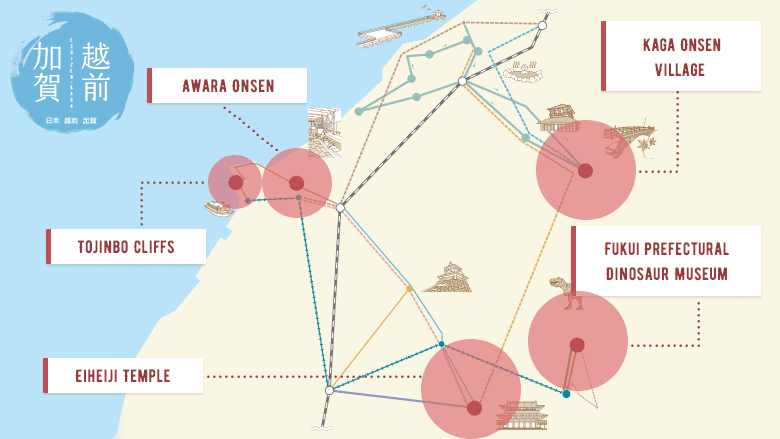
Echizen-Kaga tour map
Access information for the above 5 sightseeing areas for train, bus, and car from Tokyo, Osaka, Kyoto, Nagoya, and Kanazawa can be found in the links below.
※For those traveling by plane, the nearest airport is the Komatsu Airport in Ishikawa Prefecture. Click here for access information from Tokyo (Haneda/Narita), Shanghai, Taipei, and Hong Kong (limited time).
Making the Most Out of Echizen-Kaga! Recommended Model Course
These model courses depart from and return to JR Kanezawa Station and are recommended for visitors who want to visit Echizen-Kaga over either just 1 day or take their time over 2 nights or more. It’s time to look at each of these tour courses and introduce them! Which will you choose?
1-Day Model Course
Walk around 3 hot springs areas
Let's GO!!
Depart from JR Kanezawa Station
Come Back
Return to JR Kanezawa Station
Spend time looking at some of Japan’s best views
Let's GO!!
Depart from JR Kanezawa Station
Come Back
Return to JR Kanezawa Station
A zen journey and encountering dinosaurs
Let's GO!!
Depart from JR Kanezawa Station
Come Back
Return to JR Kanezawa Station
The PDF below introduces various things to enjoy and traffic information for the above 3 model courses, so be sure to check it out!
See more details about Echizen-Kaga 1-day tours (PDF)3-Days-2-Nights Model Course
The following model course is recommended for those who want to take their time enjoying Echizen-Kaga by car!
Day1
Let's GO!!
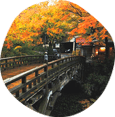
Yamanaka Onsen andKakusenkei Gorge
(sightseeing and lunch)
Move
About 15 minutes by car
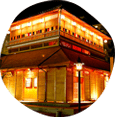
Yamashiro Onsen
(overnight stay)
Day2→
Day2
Let's GO!!
Move
About 1 hour by car
Move
About 30 minutes by car
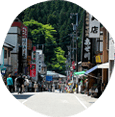
Eiheiji Monzen-dori
(lunch)
Move
About 40 minutes by car
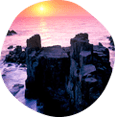
Tojinbo Cliffs
(tour boat)
Move
About 15 minutes by car
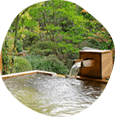
Awara Onsen
(overnight stay)
Day3→
Day3
Let's GO!!
Move
About 35 minutes by car

Echizen Bamboo Doll Village
(production experience)
Come Back
Experience Echizen-Kaga! Click Here for Information on Things You Can Only Experience in Echizen-Kaga




There’s so much to experience in the Echizen-Kaga area! For example, the below items! It’s time to get excited!
- Traditional Japanese Culture: Training experiences for Zazen (seated Zen meditation) and sutra copying, ceramics experiences making your own Kutaniyaki bowl using classic techniques, and maiko experiences where you’re transformed into a lovely maiko!
- Outdoor Sports: Activities you typically can’t go on, such as adventures deep into the gorge, kayak experiences, and beginner-friendly surfing experiences!
- Gourmet and Food Culture: BBQ sets with meat and dessert, farm experiences where you can milk cows and make butter, and experiences making tofu from soybeans!
Anyone can easily apply for these sorts of experiences online! Click the link below to look for experiences you’d like to try!
Echizen-Kaga experience information all in one place! Click here for details!Recommended Spots for Spring, Summer, Fall, and Winter in Echizen-Kaga
Echizen-Kaga is gaining popularity as a tourist destination with things to do year-round. Below we will introduce our recommended places to visit for each season!

Recommended Spots in Spring
- Visit Japan’s oldest remaining castle tower when cherry blossoms are in bloom: Maruoka Castle
- Enjoy cherry blossoms along the river from a pleasure boat: Daishoji Nagashibune River Boats
- Cherry blossoms bloom in the spring at this park: Yoshizaki Gobo Temple Remains

Recommended Spots in Summer
- 200,000 flowers bloom along the lake’s shore: Awara Iris Garden by Lake Kitagaya
- The moss growing across the entire area makes it look like a fantasy world: Heisenji Hakusan Shrine
- Japan’s largest resort pool: Shibamasa World Amusement Park
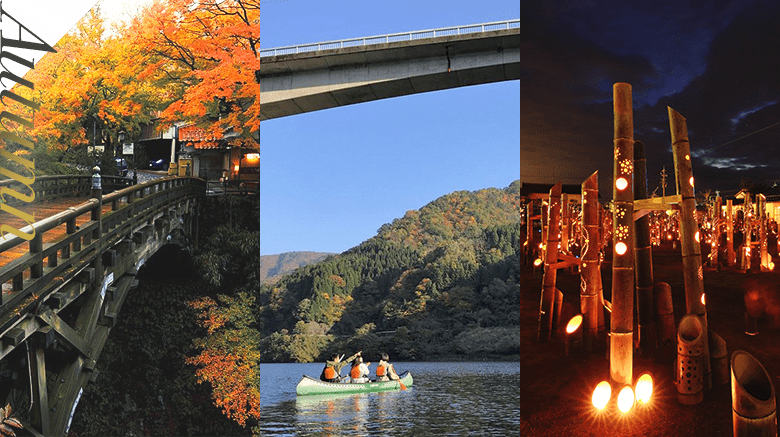
Recommended Spots in Fall
- The Hokuriku region’s premier gorge and famous fall beauty: Kakusenkei Gorge
- A beautiful view of fall leaves at the end of the climb: Mt. Hakusan mountain range
- Many bamboo lights create a nighttime scene of autumnal beauty: Awara Togenkyo
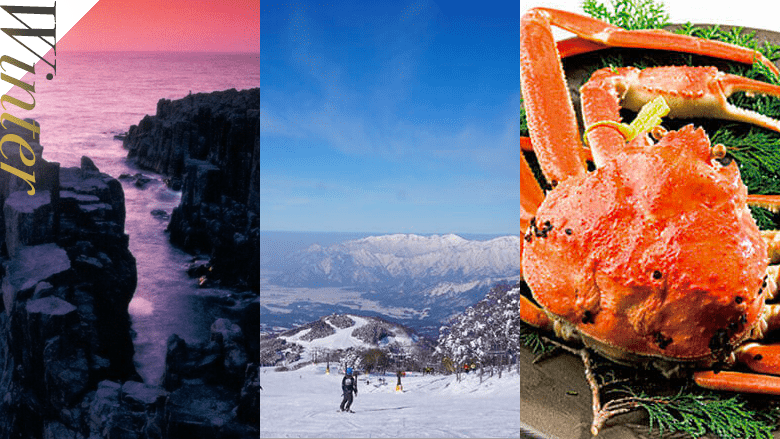
Recommended Spots in Winter
- Mid-winter scenery with snow blowing up from the Eastern Sea: Tojinbo Cliffs
- The largest ski resort in western Japan: Skijam Katsuyama
- Enjoy the king of Japan’s winter flavors: Echizen Gani crab at Mikuni Onsen
Echizen-Kaga’s Annual Events
You’re sure to make great memories if you visit Echizen-Kaga for its festivals and events! Below is information on the main events and festivals held in the area throughout the year!
【February】
Katsuyama Sagicho Festival: A festival known to usher in spring, men in long-sleeved red kimono stand atop yagura turrets playing music on shamisen and flutes. (Venue: Katsuyama city area)
【April】
Maruoka Castle Cherry Blossom Festival: The Yoshino cherry trees are in full bloom at Maruoka Castle, chosen as one of Japan’s top 100 cherry blossom spots. During the festival, the cherry trees are illuminated by 300 paper lanterns, creating an enchanting view.
(Venue: Maruoka Castle)

【June】
Awara Kitagaya Lakeside Iris Festival: 300,000 iris flowers are in beautiful full bloom from early to mid-June. (Venue: Awara Iris Garden by Lake Kitagaya)

【August】
Awara Yukake Festival: Held August 8th and 9th every year. Be sure not to miss the “yukake mikoshi,” where the mikoshi has hot water tossed on it as it goes around town. The festival is brought further to life by beautiful festival floats, taiko drum performances, and manju-maki. (Venue: Awara Onsen)
Mikuni Fireworks Show: A fireworks display widely considered to be the largest in the Hokuriku region. Around 10,000 fireworks light up and color the night sky. (Venue: Mikuni, Sakai City)

【September】
Koikoi Festival: Rowdy shouts follow the mikoshi for young men and the women working at the hot springs as a giant lion’s-head costume roams the streets. Geisha and festival-goers join together in song and dance in one massive performance. (Venue: Yamanaka Onsen)

【November】
Awara Togenkyo: 2,000 bamboo lanterns of various sizes are carved out of whole bamboo, creating beautiful light art that envelops the winter hot springs town in a gentle light. (Venue: Awara Onsen)

Echizen-Kaga Keywords
The more you know about the area and culture of Echizen-Kaga, the more you’re sure to enjoy your trip! Here are some keywords relevant to Echizen-Kaga; if you’re interested in visiting, be sure to keep these in mind!
What is the Hakusan faith?
Since Japan’s ancient times, the sacred Mt. Hakusan has been worshipped as a mountain kami, or Shinto god, that supplied the water needed for agriculture, as well as an ocean kami that served as a beacon for ships at sea. Since Japan’s Heian era (794 onward), that faith has flourished in the form of worshipping Mt. Hakusan, and it is considered the starting point of the mountain climb Zenjodo route between Echizen (Fukui Prefecture) and Kaga (Ishikawa Prefeture). Echizen-Kaga truly is the foundation of the Hakusan faith.
What is Kutaniyaki?
Kutaniyaki is a traditional ceramic craft from Kaga Prefecture with 360 years of history. It is a traditional craft highly regarded not only in Japan but worldwide, colorful porcelain characterized by its bold compositions and vivid decorations. There are many Kutaniyaki artisans throughout each part of the Echizen-Kaga area, and one of the appealing points about the craft is the saying “there are as many styles as there are kilns,” indicating the diverse nature of Kutaniyaki.
What are soyu and kosoyu?
In the Hokuriku region, public baths located outside of hotels and ryokans are called “soyu.” There are many locals who visit soyu even though they have baths at home, and as a social area many tourists visit it as well.
In recent years, many hot springs areas in the Hokuriku region, including Ishikawa Prefecture’s Kaga Onsenkyo, have rebuilt their soyu. As such, visitors can enjoy their time in new, carefully designed bathhouses that retain their old-fashioned style while looking out over the beautiful lake before you.
What is Echizen Gani crab?
Echizen Gani crab is a variety of snow crab that is caught at one of Fukui Prefecture’s fishing ports, and it’s known as Japan’s top brand of snow crab! The governor of Fukui Prefecture in 1910 presented Echizen Gani crab as a gift at Togu Palace, and as a result it quickly gained popularity.
Echizen Gani crab can only be fished during 4-month period, from November 6th until March 20th, in an effort to conserve the population. As such, if you visit Echizen-Kaga during this time, be sure to try the “king of Japan’s winter flavors”!
What are the 12 remaining original castle towers?
There were once over 25,000 castles in Japan, but now only around 200 remain available to the general public. Out of those 200, only 12 have been around since the Edo period!
One of those 12 remaining original castle towers is “Maruoka Castle,” located in the Echizen-Kaga area. It is the only castle tower in the Hokuriku region, and it’s also said to be the oldest castle tower in existence!
Useful Information: Echizen-Kaga’s Official Free App
“Echizen-Kaga Navigation” is the official app for the Echizen-Kaga area, provided by the local government to make sightseeing in the area more convenient. The entire app is free, and it offers users plenty of information on sightseeing locations, souvenirs, and the local areas, as well as coupons for shops.



App Features
- Echizen-Kaga Navigation is the official tourist information app for the area, provided completely for free by the Echizen-Kaga area’s local governments (Awara City, Sakai City, Eiheiji, Katsuyama City, and Kaga City).
- Introduces sightseeing spots, gourmet foods, and souvenirs alongside beautiful pictures, all very useful for both group and solo trips.
- Not only offers recommended travel routes, but also displays nearby places to visit.
- Introduces sightseeing spots, gourmet foods, and souvenirs alongside beautiful pictures, all very useful for both group and solo trips.
- Not only offers recommended travel routes, but also displays nearby places to visit.

Be sure to download the app if you want to visit the Echizen-Kaga area!
Download for iOSDownload for Android
